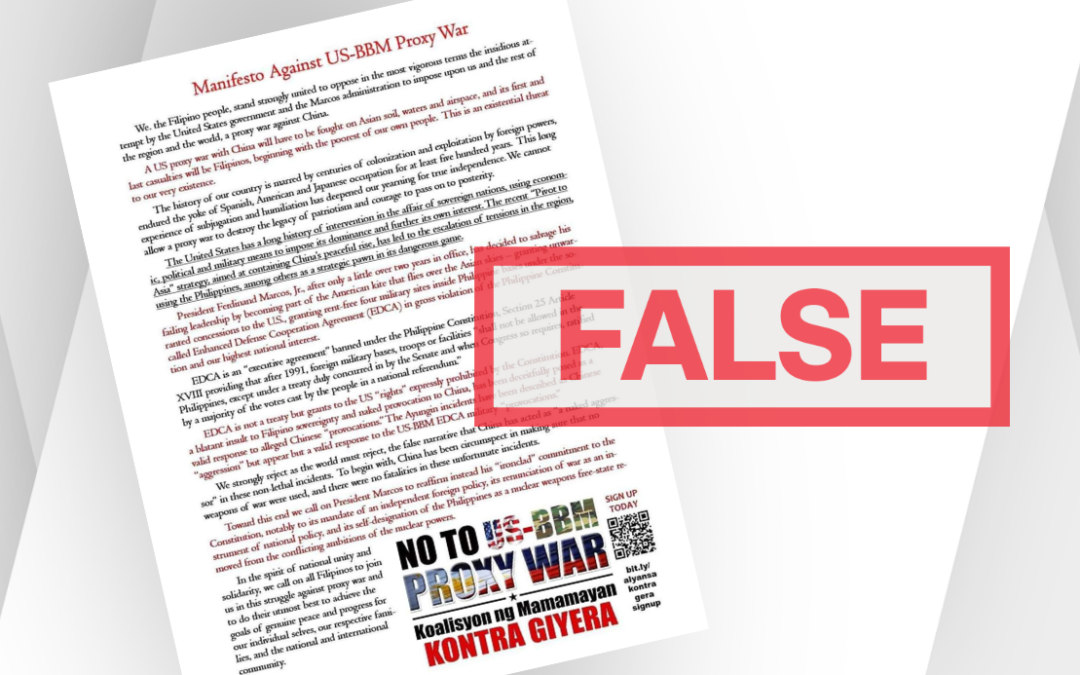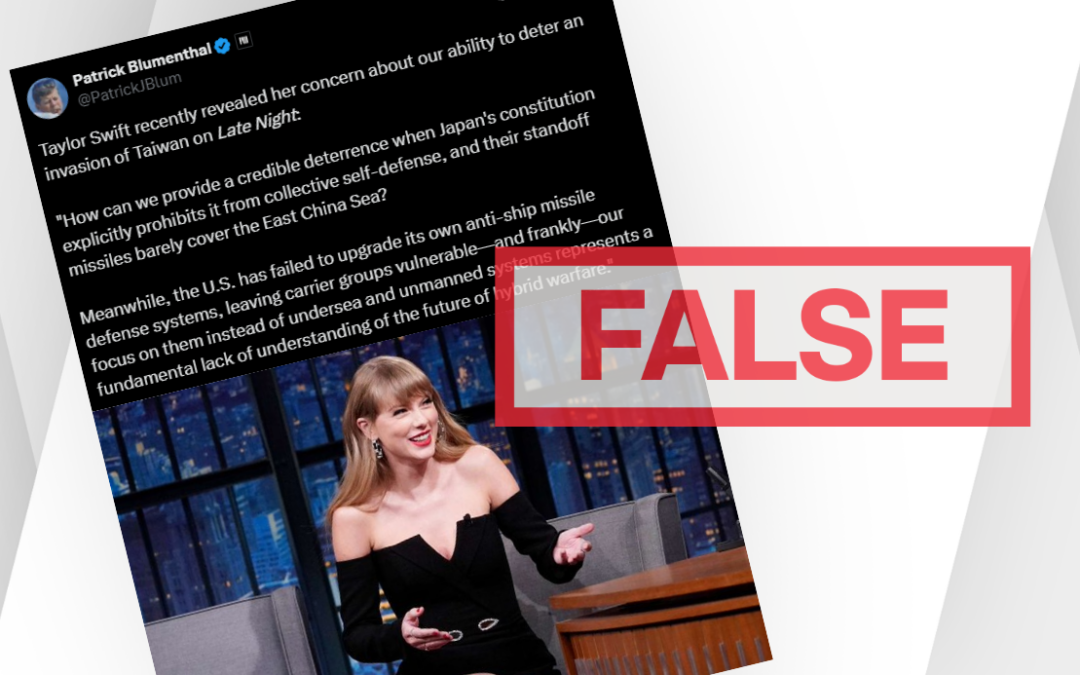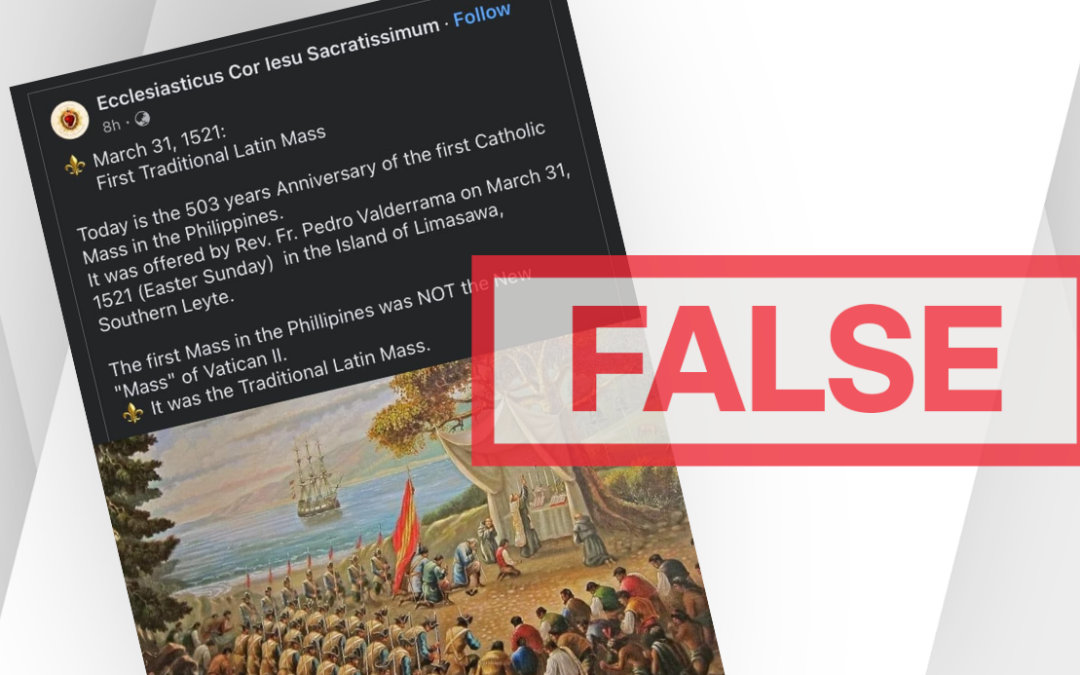
A pro-Marcos YouTube channel posted a video falsely claiming that the Marcos family was kidnapped by the United States military during the 1986 Edsa People Power Revolution.

CLAIM: The Marcos family was kidnapped by the US military during 1986 Edsa People Power Revolution.
RATING: FALSE
A pro-Marcos YouTube channel made the false claim that the Marcos family was kidnapped by the United States military during the 1986 Edsa People Power Revolution.
YouTuber Caloy Roy of “Bagong Lipunan” attempted to fact-check Rappler CEO Maria Ressa during her Nobel Prize lecture in 2021.
In the video, Caloy claims the Marcos family was forcibly removed from the Philippines by the US military by showing a video interview of Bongbong Marcos.
The son of the late dictator and kleptocrat said the US military offered to take them to Ilocos but didn’t bring them there. Based on this, Roy goes on to conclude that the Marcos family were kidnapped.
However, testimony from the then defense minister of Ferdinand Marcos, Sr., Juan Ponce Enrile stated that Marcos willingly left the country.
According to Enrile, Marcos initially wanted to establish a “provisional government” where he would remain President until 1987, stating that “[he] would like to leave politics in a clean and orderly manner.”
Enrile refused because he said that he had committed support to Corazon “Cory” Aquino – the wife of the slain senator Benigno Aquino Jr.
Reports by The New York Times, The Washington Post, and the Associated Press all published on Feb. 26, 1986, stated that Marcos Sr. was trying to negotiate with US administrators and intermediaries for the possibility of staying in power. Marcos Sr. spoke with Sen. Paul Laxalt – who was a close friend to President Reagan – and attempted to find a way to make his difficult situation work in his favor.
However, Senator Laxalt insisted that President Reagan wanted him to step down for a “peaceful transition” of power.
Both of Marcos’s envoys, Blas F. Ople (former Minister of Labor and Employment) and Alejandro Melchor (Executive Secretary) were briefed and advised by US officials to convince Marcos that “his time had run out.”
In a 2003 interview, Stephen W. Bosworth, the former US ambassador, recalled the role that he played in putting pressure on Marcos to leave the country.
He told Michael Mahoney that he had warned Marcos by phone that he should not move by force against Enrile and Ramos in a military camp, and that he should not jeopardize the safety of hundreds of thousands of Filipino civilians who were out on the streets.
“Finally, over the next couple of days the situation played out so that we issued a statement, the U.S. from Washington, which I then transmitted, to Marcos and others saying in effect the time has come you should leave,” said Bosworth.
Marcos Sr. was told he would be escorted safely out of the country and would be provided with medical assistance.
“He was getting the same message from all of us […] that it was time to go,” said Bosworth. “There was no way to get out but with our help.”
“I then got back to him the next day. He was in the palace with his family and his grandchildren. We offered him three alternative routes out. Basically by land and by sea and by air. He opted for the air route and he sent some of his minions and his baggage out by boat. We took him out by helicopter,” said Bosworth.
But Marcos Sr. supposedly insisted to his Cabinet Ministers and friends that he was ready to die in Malacañan Palace. It was his daughters who pleaded for him to take the helicopter to Clark Air Base.
Ambassador Bosworth then contacted Cory Aquino to inform her that Marcos had finally agreed to leave the Philippines.
Based on reports by The New York Times, Los Angeles Times, and the Associated Press that were published in 1986, US President Ronald Reagan offered Marcos a safe haven in US territory. When the Marcoses landed in Clark, Marcos Sr. was carried on a stretcher, while the rest of his party boarded a C-141 cargo plane headed toward Andersen Air Force Base in Guam.
Former Hawaii governor George Ariyoshi said that when the Marcos family arrived in Hawaii on Feb. 26, 1986, the elder Marcos was ″spry and in good spirits.″
Marcos Sr. told Ariyoshi of the original plan to go to Laoag, Ilocos Norte. It was the family that declined the original plan and persuaded him to come to the US, he said.
The error-laden fact-check video has been viewed around 1,000 times but was taken down by YouTube. It was then re-uploaded and has been viewed around 4,300 times. – J.T. Manalaysay
PressOne.PH is a verified signatory of the Code of Principles of the International Fact -Checking Network (IFCN) at Poynter. The code of principles of the International Fact-Checking Network is a series of commitments organizations abide by to promote excellence in fact-checking. We believe nonpartisan and transparent fact-checking can be a powerful instrument of accountability journalism..
PressOne.PH believes that fact-checking is essential to combating misinformation and disinformation, and in informing and educating citizens and voters. Read more of PressOne.PH’s Fact-Checking Policy by clicking here.
The public is welcome to send feedback or requests for fact-checks at factcheck@pressone.ph.
If you believe PressOne.PH is violating the Code of Principles of the International Fact-Checking Network (IFCN), you may submit a complaint directly to the IFCN website: https://ifcncodeofprinciples.poynter.org/complaints-policy


FACT-CHECK: EDCA is not unconstitutional
: A manifesto shared by a pro-China personality falsely claimed that the Enhanced Defense Cooperation Agreement between the Philippines and the United States is banned under the constitution.

FACT-CHECK: Taylor Swift did not make any comment about US ability to stop war in Taiwan
An X user made the false claim that Taylor Swift had commented about the United States’ naval capability to deter an invasion of Taiwan.

FACT-CHECK: Facebook post uses wrong painting to depict first Mass in PH
A Facebook post used the wrong painting to depict what it described as the first Mass in the Philippines.
